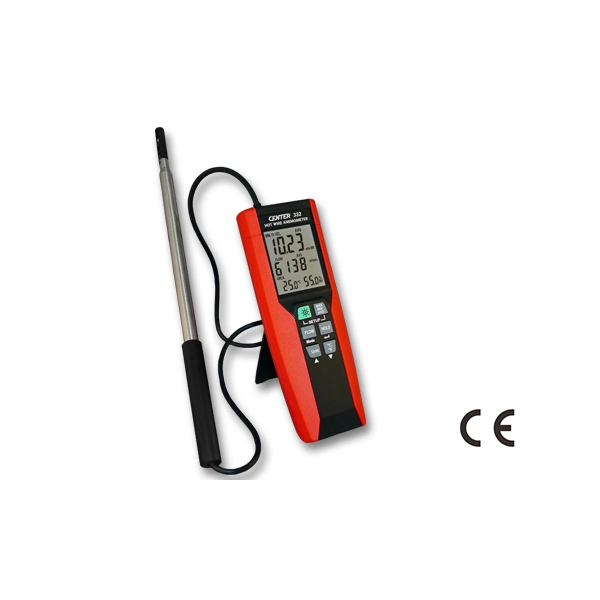Checking Out the Functions and Benefits of Anemometers for Climate Enthusiasts and Experts
From cup anemometers to sonic anemometers, each type brings its special set of applications and advantages, shedding light on numerous aspects of climatic problems. As we dive into the functions and benefits of anemometers, a deeper understanding emerges not just of dominating weather sensations but additionally of the wider implications for industries like wind power production and ecological research study.
Importance of Anemometers in Weather Tracking
Anemometers play a critical function in climate surveillance by giving precise measurements of wind speed, assisting in projecting and understanding weather condition patterns. These tools, ranging from traditional cup anemometers to modern-day ultrasonic anemometers, are crucial for meteorologists, scientists, and climate enthusiasts alike.

Kinds of Anemometers and Their Applications
The most typical kinds of anemometers consist of mug anemometers, vane anemometers, hot-wire anemometers, and ultrasonic anemometers. Mug anemometers are composed of 3 or 4 cups mounted on horizontal arms that revolve with the wind, measuring its rate. Vane anemometers, on the other hand, make use of a freely rotating vane to align with the wind direction, providing both wind rate and direction measurements.
Each type of anemometer has its one-of-a-kind advantages and applications. Cup anemometers are durable and suitable for basic weather condition tracking, while vane anemometers are preferred for directional measurements. Hot-wire anemometers are delicate to reduced air speeds, making them perfect for interior environments. Ultrasonic anemometers are non-intrusive and provide high precision, frequently used in research and specialized weather condition monitoring applications. Recognizing the features and applications of each kind of anemometer is important for choosing the most appropriate tool for particular weather monitoring demands.
Benefits of Utilizing Anemometers in Projecting
In weather forecasting, the utilization of anemometers provides important advantages for improving the accuracy of weather condition forecasting. Anemometers determine wind rate and instructions, offering crucial data for anticipating climate patterns. By incorporating wind information right into forecasting designs, meteorologists can better recognize the movement of weather condition systems, expect modifications in climatic conditions, and issue more precise forecasts.
Furthermore, anemometers play a vital function in evaluating potential climate threats. Extra resources Checking wind speeds helps forecasters anticipate severe weather condition events such as hurricanes, tornadoes, and winter tornados with greater precision. This very early warning system makes it possible for authorities to release timely notifies and execute essential safety and security procedures, lowering the risks to life and home.
Additionally, anemometers help in enhancing renewable resource production. By examining wind patterns, meteorologists can recognize suitable places for wind farms and predict energy output, adding to the efficient generation of wind power.

Anemometers in Wind Power Manufacturing
Offered the critical function anemometers play in providing exact wind data for weather projecting and risk assessment, their importance encompasses the world of wind power production. Anemometers are necessary tools in the field of wind energy, where the measurement of wind rate and direction is vital for establishing the expediency and effectiveness of wind turbine installations. By precisely measuring wind speeds at differing heights, anemometers assist optimize the positioning and style of wind turbines to make the most of power output.
In wind ranches, anemometers are purposefully placed to gather real-time wind information that is utilized to assess the prospective energy manufacturing find out here of a website. This information contributes in figuring out the financial stability of wind power tasks and in projecting power generation to ensure grid stability. In addition, anemometers aid in checking wind conditions to maximize turbine performance, avoid damage from high winds, and ensure the security of personnel operating in the location of wind generators.
Enhancing Climate Understanding With Anemometers

Anemometers play a crucial role in enhancing our understanding of microclimates. These localized climate conditions can differ dramatically from more comprehensive regional projections, making it essential to have exact data for particular locations. anemometer. By purposefully positioning anemometers in numerous locations, researchers can gather detailed info on how wind acts in different surfaces, urban atmospheres, or bodies of water
Furthermore, anemometers add to boosting weather forecasting versions by supplying real-time data on wind actions. This info is especially useful for forecasting severe climate events, maximizing farming practices, and supporting industries like air travel and maritime navigation. Generally, anemometers are vital instruments that enable us to dig much deeper into the complexities of weather condition systems, inevitably leading to even more better-informed choices and exact predictions.
Verdict
In conclusion, anemometers play an essential function in weather tracking and projecting by measuring wind speed and instructions. Anemometers likewise this link have applications in wind energy manufacturing, further highlighting their importance in both weather forecasting and renewable energy fields.
From cup anemometers to sonic anemometers, each type brings its unique collection of advantages and applications, losing light on numerous facets of climatic problems. These tools, varying from typical cup anemometers to modern-day ultrasonic anemometers, are vital for meteorologists, scientists, and weather condition fanatics alike. The most common types of anemometers include cup anemometers, vane anemometers, hot-wire anemometers, and ultrasonic anemometers. Mug anemometers are robust and ideal for basic climate monitoring, while vane anemometers are preferred for directional measurements. Anemometers are crucial tools in the field of wind power, where the dimension of wind speed and direction is vital for identifying the feasibility and performance of wind generator setups.